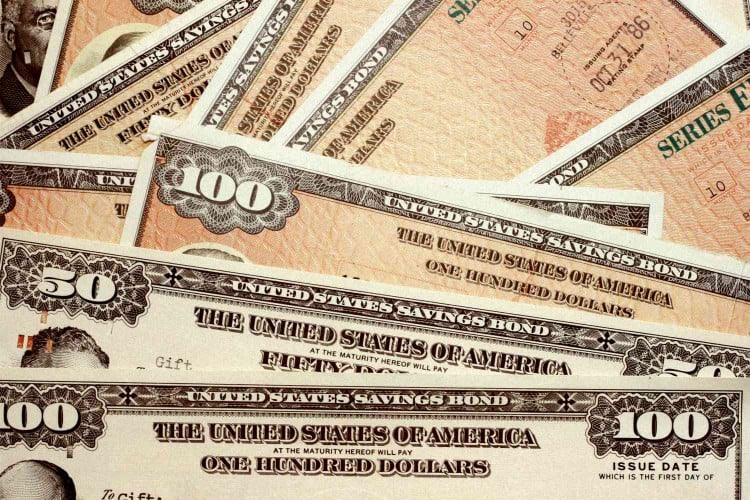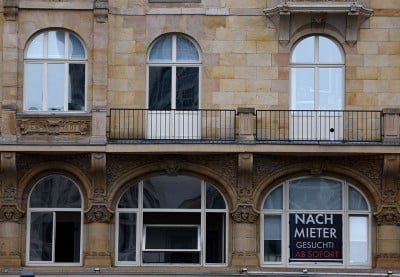
Jitalia17/Getty Images
Treasury yields are the total amount of money you earn by owning U.S. Treasury bills, notes, bonds, or inflation-protected securities. The U.S. Department of the Treasury sells them to pay for the U.S. debt. It's crucial to remember that yields go down when there is a lot of demand for the bonds. Yields move in the opposite direction of bond values.
How Treasury Yields Work
Treasury yield prices are based on supply and demand. In the beginning, the bonds are sold at auction by the Department of the Treasury, which sets a fixed face value and interest rate.
In the auctions, all successful bidders are awarded securities at the same price. This price corresponds to the highest rate, yield, or discount margin of the competitive bids that are accepted.
If there is a lot of demand, the bond will go to the highest bidder at a price above the face value. This lowers the yield. The government will only pay back the face value plus the stated interest rate. Demand will rise when there is an economic crisis. This is because investors consider U.S. Treasurys to be an ultra-safe form of investment.
If there is less demand, then bidders will pay less than the face value. It then increases the yield.
Bond prices can fluctuate. Buyers may not hold them for the full term. Instead, they may resell Treasurys on the secondary market. So, if you hear that bond prices have dropped, then you know that there is not a lot of demand for the bonds. Yields must increase to compensate for lower demand.
How They Affect the Economy
As Treasury yields rise, so do the interest rates on consumer and business loans with similar lengths. Investors like the safety and fixed returns of bonds. Treasurys are the safest, since they are guaranteed by the U.S. government. Other bonds are riskier. They must return higher yields in order to attract investors. To remain competitive, interest rates on other bonds and loans increase as Treasury yields rise.
When yields rise on the secondary market, the government must pay a higher interest rate to attract buyers in future auctions. Over time, these higher rates increase the demand for Treasurys. That's how higher yields can increase the value of the dollar.
How They Affect You
The most direct manner in which Treasury yields affect you is their impact on fixed-rate mortgages. As yields rise, banks and other lenders realize that they can charge more interest for mortgages of similar duration. The 10-year Treasury yield affects 15-year mortgages, while the 30-year yield impacts 30-year mortgages. Higher interest rates make housing less affordable and depress the housing market. It means you have to buy a smaller, less expensive home. That can slow gross domestic product growth.
Did you know that you can use yields to predict the future? It’s possible if you know about the yield curve. The longer the time frame on a Treasury, the higher the yield. Investors require a higher return for keeping their money tied up for a longer period of time. The higher the yield for a 10-year note or 30-year bond, the more optimistic traders are about the economy. This is a normal yield curve.
If the yields on long-term bonds are low compared to short-term notes, investors could be uncertain about the economy. They may be willing to leave their money tied up just to keep it safe. When long-term yields drop below short-term yields, you’ll have an inverted yield curve, which predicts a recession.
One way to quantify this is with the Treasury yield spread. For example, the spread between the two-year note and the 10-year note tells you how much more yield investors require to invest in the longer-term bond. The smaller the spread, the flatter the curve.
Yield Trends
The yield curve reached a post-recession peak on January 31, 2011. The two-year note yield was 0.58. That's 2.84 basis points lower than the 10-year note yield of 3.42.
This is an upward-sloping yield curve. It revealed that investors wanted a higher return for the 10-year note than for the two-year note. Investors were optimistic about the economy. They wanted to keep spare cash in short-term bills instead of tying up their money for 10 years.
2012: Flattened Yield Curve
2018–2020: Inverted Yield Curve
On Dec. 3, 2018, the Treasury yield curve inverted for the first time since the recession. The yield on the five-year note was 2.83. That's slightly lower than the yield of 2.84 on the three-year note. In this case, you want to look at the spread between the three-year and five-year notes. It was -0.01 points.
| Date | 3-Mo | 2-Yr | 3-Yr | 5-Yr | 10-Yr | 3-5 yr. Spread |
|---|---|---|---|---|---|---|
| December 3, 2018 | 2.38 | 2.83 | 2.84 | 2.83 | 2.98 | -0.01 |
On March 22, 2019, the Treasury yield curve inverted further. The yield on the 10-year note fell to 2.44. That's 0.02 points below the three-month bill. The Federal Reserve Bank of Cleveland has found the yield curve is often used to predict recessions. It reliably predicted that a recession would occur about a year out. In fact, there were two times the curve inverted but a recession didn't occur at all.
On Aug. 12, 2019, the 10-year yield hit a three-year low of 1.65%. That was below the one-year note yield of 1.75%. On Aug. 14, the 10-year yield briefly fell below that of the two-year note. Also, the yield on the 30-year bond briefly fell below 2% for the first time ever. Although the dollar was strengthening, it was due to a flight to safety as investors rushed to Treasurys.
The 2020 inversion began on Feb. 14, 2020. The yield on the 10-year note fell to 1.59% while the yield on the one-month and two-month bills rose to 1.60%.
The inversion steadily worsened as the situation grew worse. Investors flocked to Treasurys, and yields fell, setting new record lows along the way. By March 9, the 10-year note had fallen to a record low of 0.54%. The yield on the one-month bill was higher, at 0.57%.
2020 Recession and Recovery
As predicted by the yield curve inversion, the U.S. experienced a recession in 2020, contracting a record 31% in the second quarter. But unlike other recessions, the economy recovered almost as quickly as it had plummeted, rebounding 33% in the third quarter of 2020. The recovery continued in 2021, with more than 10% of growth.
2022 Yield Curve Inversion
The yield curve briefly inverted again in March and then in April of 2022, when two-year Treasury yields were 2.43% and 10-year Treasury yields were 2.42%.
Data from the Federal Reserve Bank of Cleveland pegged the chances of a recession at 4.69% in April 2022.
The chart below illustrates yield curves starting in 2005. It shows that inverted yield curves often predict a recession.
Outlook
The Fed started raising the fed funds rate beginning in December 2015, but lowered it again in 2019 and 2020.
There are ongoing pressures to keep yields low. Economic uncertainty in the European Union, for example, can keep investors buying traditionally safe U.S. Treasurys. Foreign investors, China, Japan, and oil-producing countries, in particular, need U.S. dollars to keep their economies functioning. The best way to collect dollars is by purchasing Treasury products.
In the long-term, these factors can put upward pressure on Treasury yields:
- The largest foreign holder of U.S. Treasurys is Japan followed by China. China has threatened to purchase fewer Treasurys, even at higher interest rates. If this happens, it would indicate a loss of confidence in the strength of the U.S. economy. It would drive down the value of the dollar in the end.
- One way the United States can reduce its debt is by letting the value of the dollar decline. When foreign governments demand repayment of the face value of the bonds, it will be worth less in their own currency if the dollar's value is lower.
- The factors that motivated China, Japan, and oil-producing countries to buy Treasury bonds are changing. As their economies become stronger, they are using their current account surpluses to invest in their own country's infrastructure. They aren't as reliant upon the safety of U.S. Treasurys and are starting to diversify away.
- Part of the attraction of U.S. Treasurys is that they are denominated in dollars, which is a global currency. Most oil contracts are denominated in dollars. Most global financial transactions are done in dollars. As other currencies, such as the euro, become more popular, fewer transactions will be done with the dollar, which will end up lessening its value and that of U.S. Treasurys.
The Taper Tantrum
In 2013, yields rose 75% between May and August alone. Investors sold off Treasurys when the Federal Reserve announced that it would taper its quantitative easing policy. In December of that year, it began reducing its $85 billion a month purchases of Treasurys and mortgage-backed securities. The Fed cut back as the global economy improved.
The Yield Hit Lows in 2012
On June 1, 2012, the benchmark 10-year note yield closed at 1.47%. It was caused by a flight to safety as investors moved their money out of Europe and the stock market.
Yields fell further on July 25. The yield on the 10-year note closed at 1.43%. Yields were abnormally low due to continued economic uncertainty. Investors accepted these low returns just to keep their money safe. Concerns included the eurozone debt crisis, the fiscal cliff, and the outcome of the 2012 presidential election.
Treasury Yields Predicted the 2008 Financial Crisis
In January 2006, the yield curve started to flatten. It meant that investors did not require a higher yield for longer-term notes. On January 3, 2006, the yield on the one-year note was 4.38%, a bit higher than the yield of 4.37% on the 10-year note. This was the dreaded inverted yield curve. It predicted the 2008 recession. In July 2000, the yield curve inverted, and the 2001 recession followed. When investors believe the economy is slumping, they would rather keep the longer 10-year note than buy and sell the shorter one-year note, which may do worse the following year when the note is due.
Most people ignored the inverted yield curve, because the yields on the long-term notes were still low. That meant mortgage interest rates were still historically low and indicated plenty of liquidity in the economy to finance housing, investment, and new businesses. Short-term rates were higher, thanks to Federal Reserve rate hikes, which impacted adjustable-rate mortgages the most.
Frequently Asked Questions (FAQs)
How do I invest in Treasury yields?
There are a variety of ways to invest in Treasury notes. You can purchase them directly through the government at TreasuryDirect, through a competitive auction via a bank or broker, or from resellers on the secondary market. Some mutual funds also have some Treasury exposure.
How does the federal funds rate affect Treasury yields?
The federal funds rate is closely correlated with changes in short-term Treasury yields, but this correlation weakens with longer-term yields. It's also not entirely clear whether the funds rate leads or follows the changes in Treasury yields.






